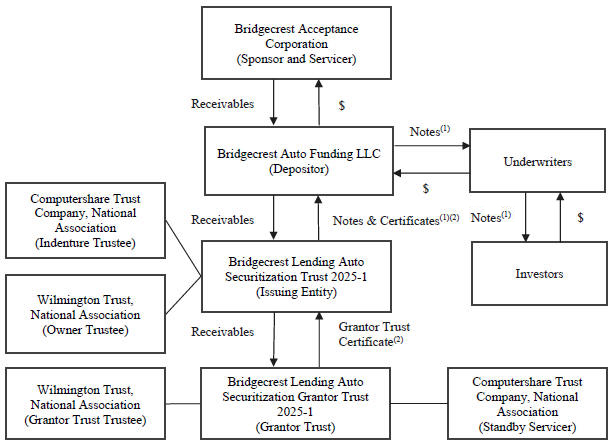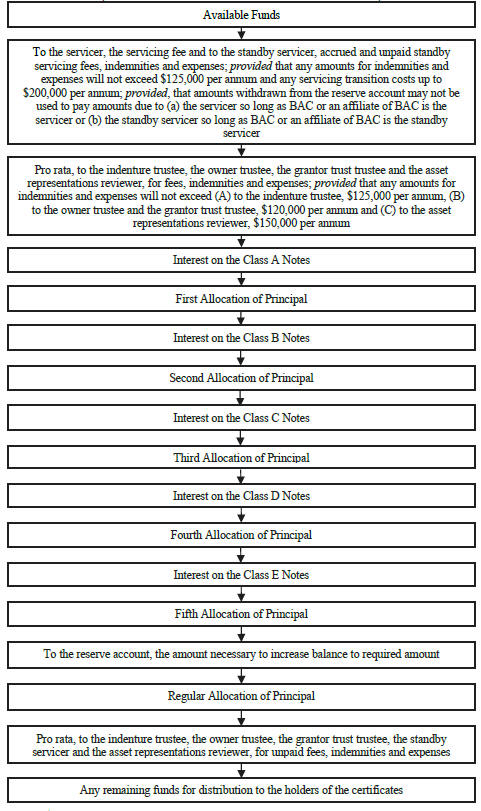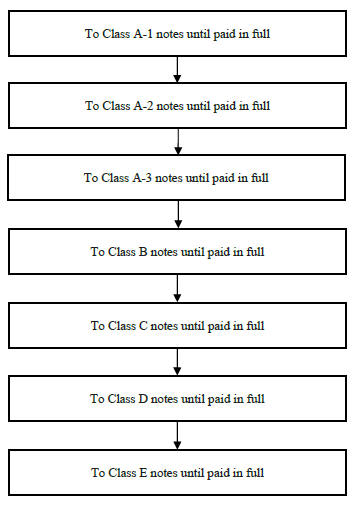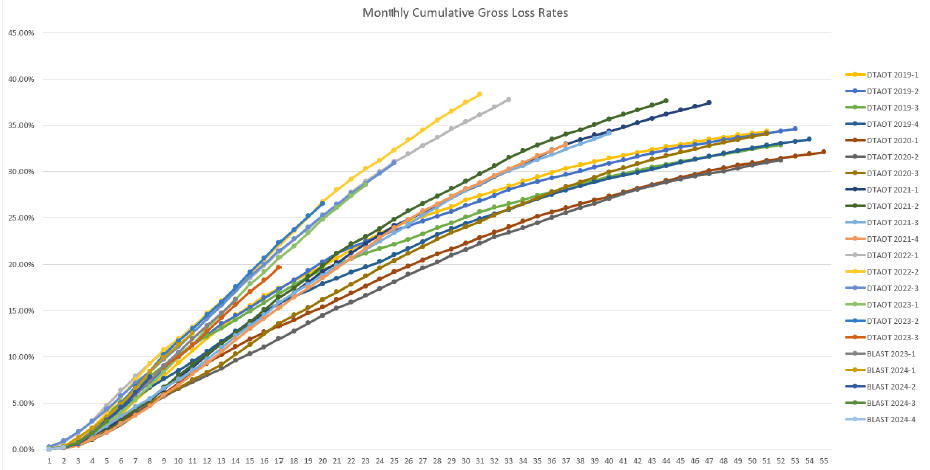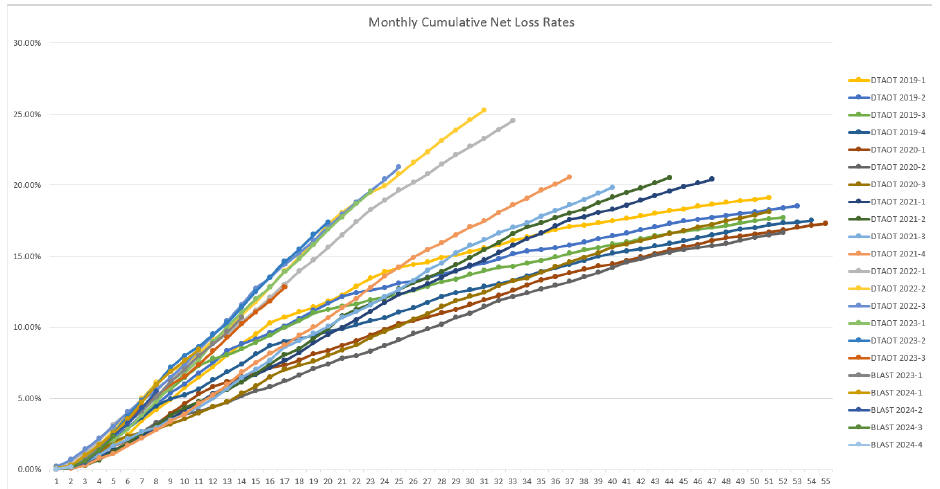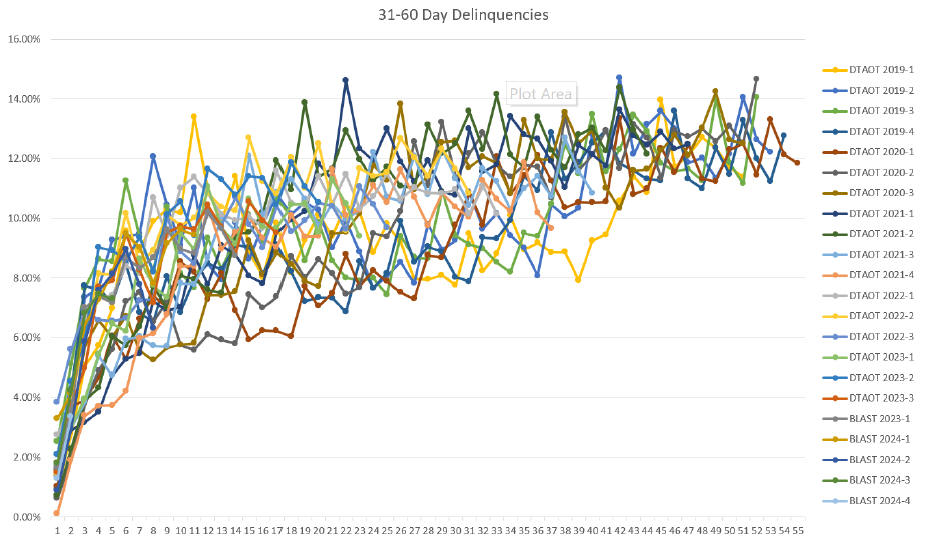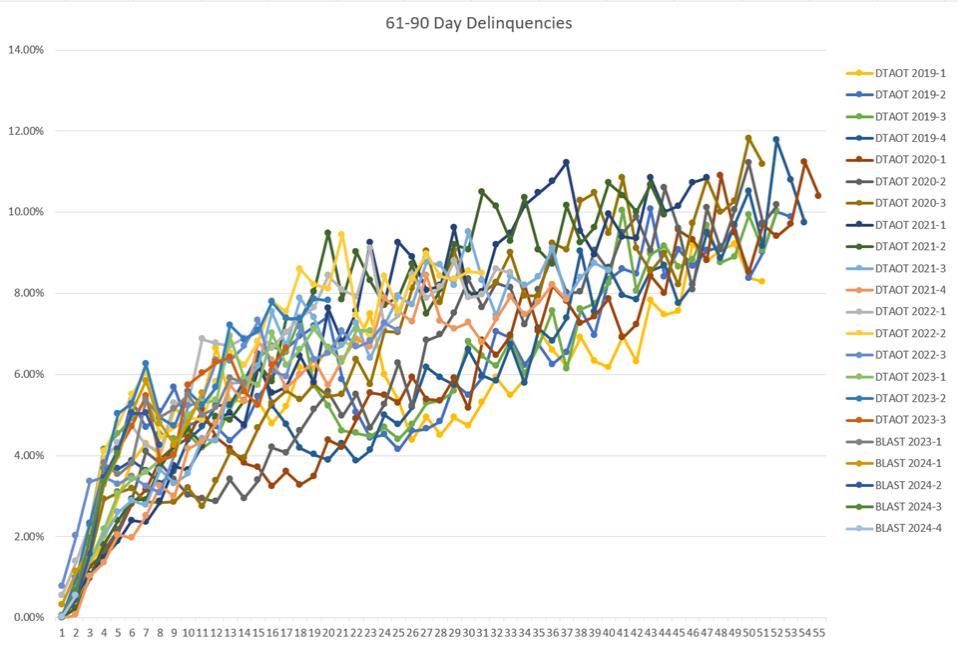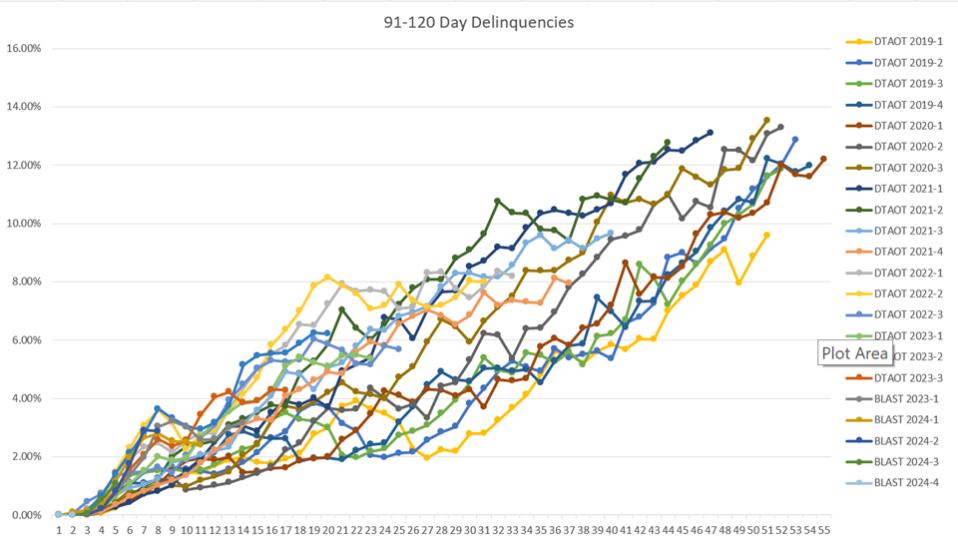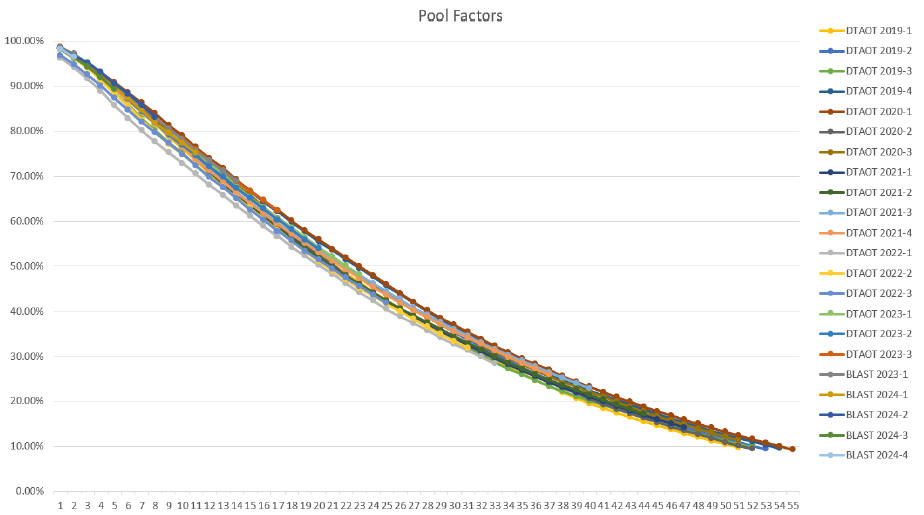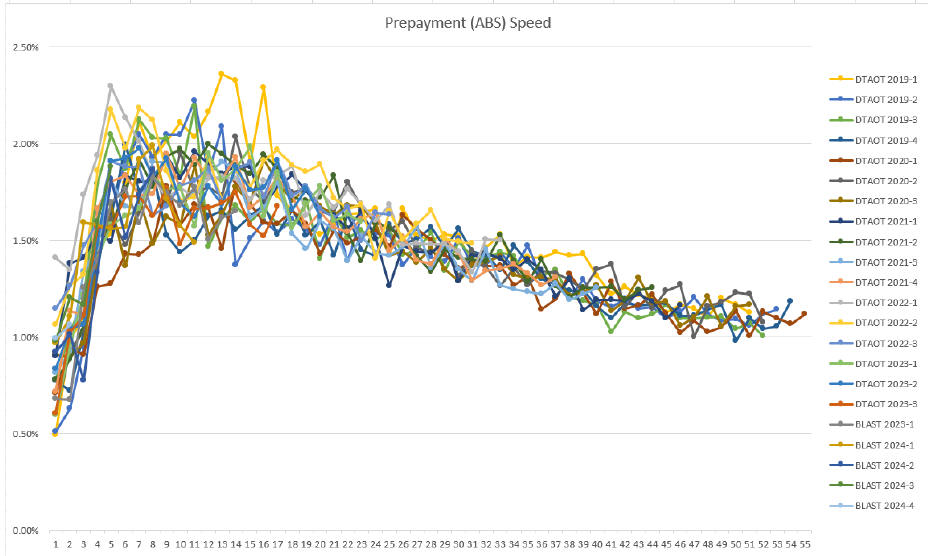GLOSSARY
“Available Funds” means, for any payment date and the related Collection Period, an amount equal to the sum of the following amounts: (i) all Collections received by the servicer during such Collection Period; (ii) the sum of the repurchase prices deposited into the collection account with respect to each receivable that will be repurchased or purchased by the sponsor or servicer, as applicable, on that payment date; (iii) any amounts deposited into the collection account in connection with the exercise of an optional redemption of the notes; and (iv) any net investment earnings from amounts on deposit in the collection account.
“Business Day” means any day other than a Saturday, a Sunday or a day on which banking institutions in the states of Delaware, Arizona or New York, or in the state in which the corporate trust office of the indenture trustee is located, are authorized or obligated by law, executive order or government decree to be closed; provided that, when used in the context of a payment date, Business Day means any day other than (i) a Saturday or Sunday or (ii) a day on which the Federal Reserve Bank of New York is closed.
“Class A-1 Note Balance” means, if the Base Transaction is issued, at any time, $76,700,000, reduced by all payments of principal made prior to such time on the Class A-1 notes; and if the Upsize Transaction is issued, at any time, $85,200,000, reduced by all payments of principal made prior to such time on the Class A-1 notes.
“Class A-2 Note Balance” means, if the Base Transaction is issued, at any time, $106,380,000, reduced by all payments of principal made prior to such time on the Class A-2 notes; and if the Upsize Transaction is issued, at any time, $122,880,000, reduced by all payments of principal made prior to such time on the Class A-2 notes.
“Class A-3 Note Balance” means, if the Base Transaction is issued, at any time, $70,920,000, reduced by all payments of principal made prior to such time on the Class A-3 notes; and if the Upsize Transaction is issued, at any time, $81,920,000, reduced by all payments of principal made prior to such time on the Class A-3 notes.
“Class B Note Balance” means, if the Base Transaction is issued, at any time, $57,150,000, reduced by all payments of principal made prior to such time on the Class B notes; and if the Upsize Transaction is issued, at any time, $65,250,000, reduced by all payments of principal made prior to such time on the Class B notes.
“Class C Note Balance” means, if the Base Transaction is issued, at any time, $77,790,000, reduced by all payments of principal made prior to such time on the Class C notes; and if the Upsize Transaction is issued, at any time, $88,810,000, reduced by all payments of principal made prior to such time on the Class C notes.
“Class D Note Balance” means, if the Base Transaction is issued, at any time, $114,300,000, reduced by all payments of principal made prior to such time on the Class D notes; and if the Upsize Transaction is issued, at any time, $130,500,000, reduced by all payments of principal made prior to such time on the Class D notes.
“Class E Note Balance” means, if the Base Transaction is issued, at any time, $42,860,000, reduced by all payments of principal made prior to such time on the Class E notes; and if the Upsize Transaction is issued, at any time, $48,940,000, reduced by all payments of principal made prior to such time on the Class E notes.
“Collection Period” means the period commencing on the first day of each calendar month and ending on the last day of such calendar month (or, in the case of the initial Collection Period, the period commencing on the close of business on the cut-off date and ending on January 31, 2025). As used in this prospectus, the “related” Collection Period with respect to any date of determination or a payment date will be deemed to be the Collection Period which immediately precedes such date of determination or payment date.
171

